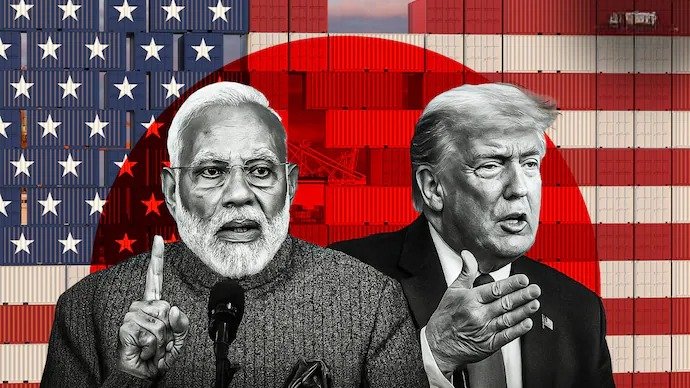Washington – In a sharp escalation of trade tensions, President Donald Trump has ordered a new 25% tariff on all Indian imports, effectively doubling duties to 50% in protest against India’s continued oil trade with Russia.
The executive order, signed on Wednesday, states that India’s trade with Moscow, particularly in the energy sector, is counter to U.S. foreign policy objectives. It warns of further actions against other countries engaged in similar practices.
“India is buying massive amounts of Russian oil and profiting off it, while innocent people in Ukraine are dying,” Trump said in a post on Truth Social. “Because of this, I will be substantially raising the tariff paid by India.”
India swiftly responded, calling the U.S. action “extremely unfortunate,” and emphasizing that its oil purchases are based on market dynamics and national energy security needs. The foreign ministry accused the U.S. of unfairly singling out India while ignoring similar behavior by other nations.
The White House said the tariff hike aims to compel India to reduce its reliance on Russian energy and align more closely with Western sanctions. However, it stopped short of applying the same measures to China, which also remains a major buyer of Russian oil.
The new tariffs—among the steepest ever imposed on India—are expected to hit crucial export sectors like textiles, footwear, and jewelry. Economists warn that such high rates make Indian goods unviable in the American market.
“Trade between the two nations is practically dead at this point,” said Garima Kapoor of Elara Securities. “We’re likely to see fallout across trade, currency stability, and diplomatic ties.”
The move also follows the breakdown of five rounds of trade talks between the U.S. and India, with the latest negotiations collapsing over demands for access to Indian agriculture and dairy markets.
With the new tariffs set to take effect in three weeks, Indian officials are scrambling to explore options. A possible compromise may involve gradual cuts in Russian oil imports and broader energy diversification.
In the background of this trade dispute, Indian PM Narendra Modi is preparing for his first official visit to China in seven years—a move some analysts say could signal a strategic realignment amid fraying ties with the U.S.



